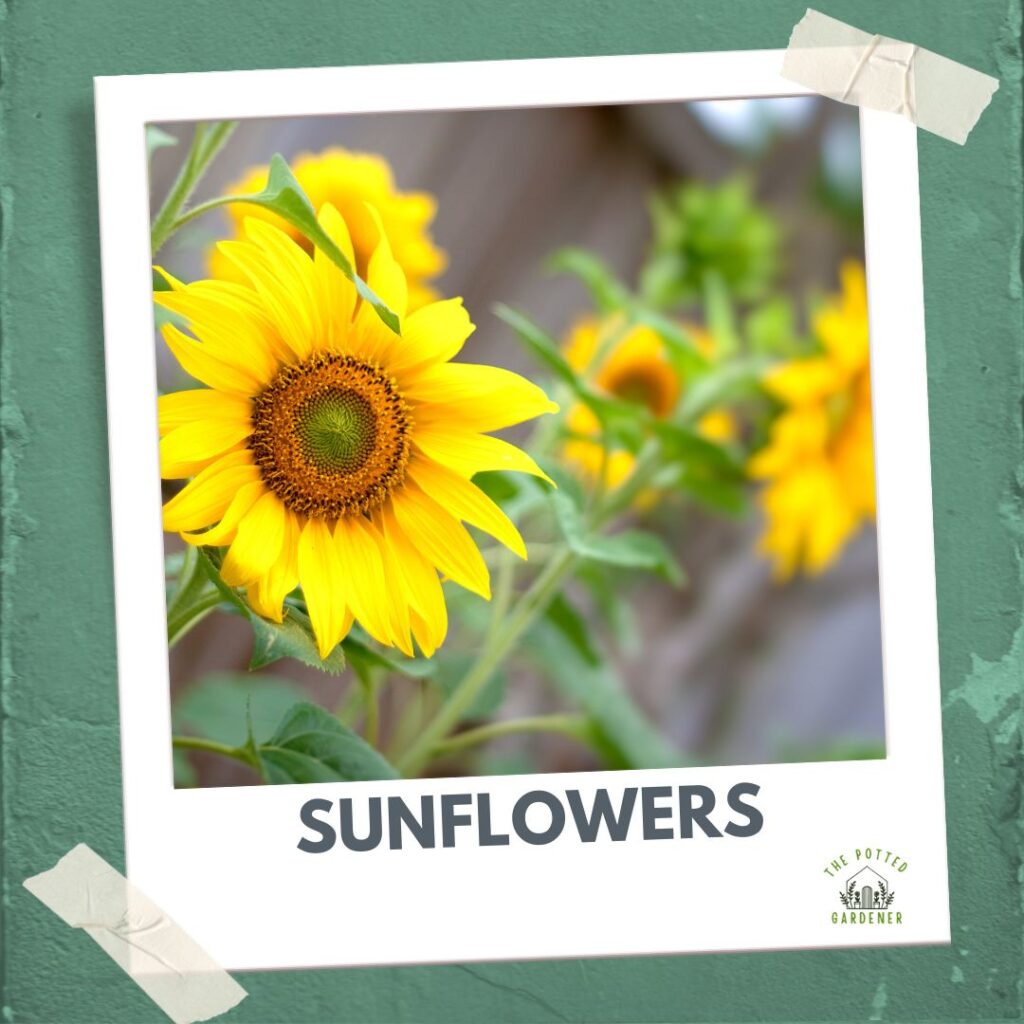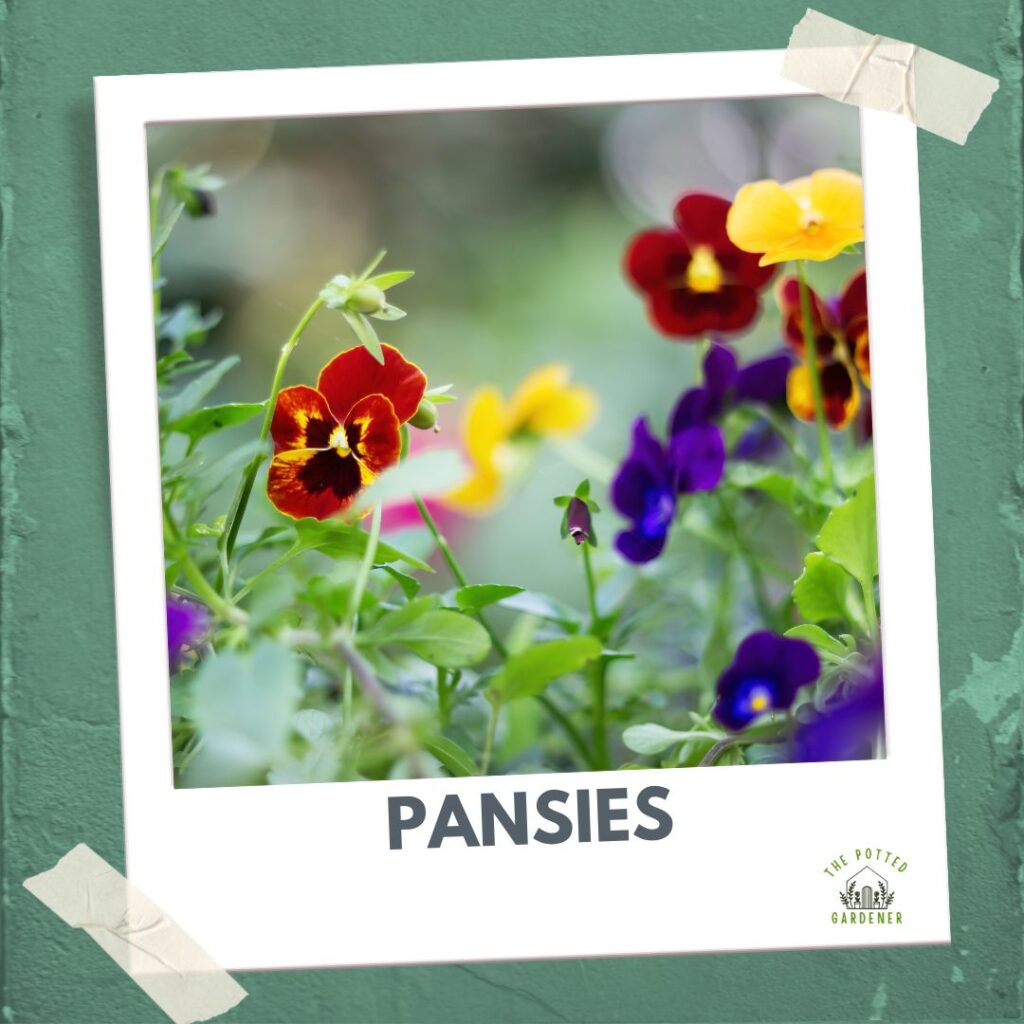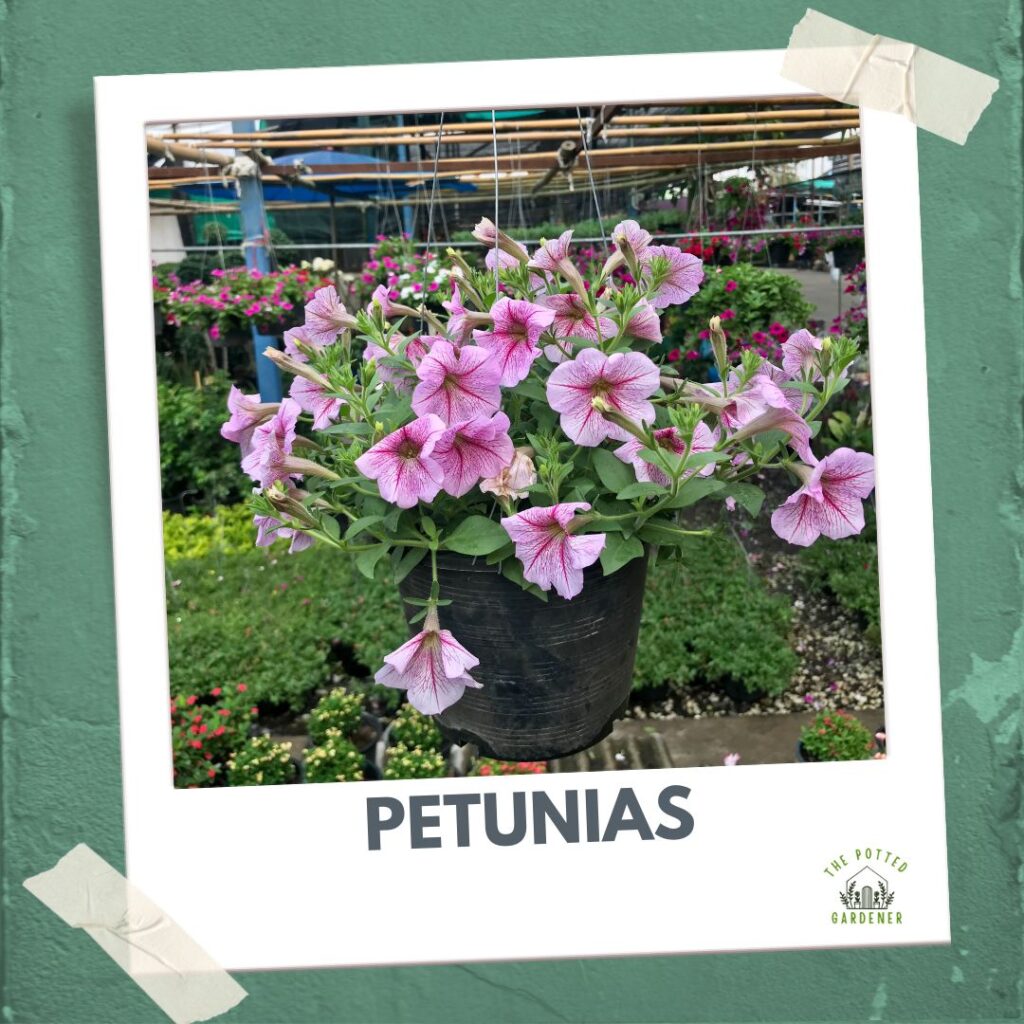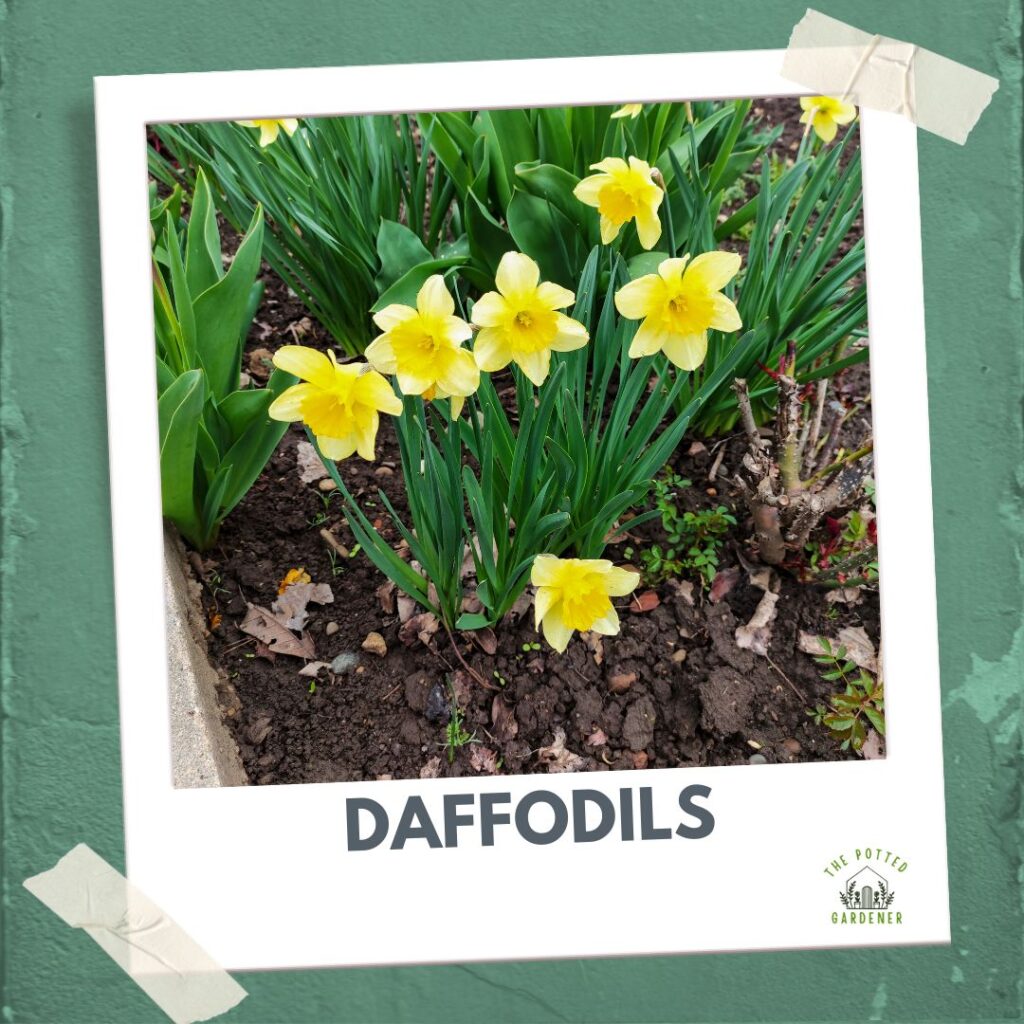Thinking about adding a splash of color to your yard, garden beds or container garden this spring but not sure how to start? Growing a vibrant garden doesn’t have to be daunting, even if you’re a beginner.
Spring is the perfect time for beginner gardeners like you to explore the world of flowering plants. Not only do these colorful blooms add aesthetic value to your home, but they also offer several other key benefits that you may not have considered.
We’ve compiled a list of 13 spring flowers that are not only stunning but also incredibly easy to grow.
From the sunny faces of marigolds to the elegant stems of tulips, these beginner-friendly blooms will ensure your garden is a riot of color with minimal fuss. Keep reading to discover which flowers will make your garden the envy of the neighborhood without breaking a sweat.
Benefits of Growing Spring Flowers
Spring flowers bring a whole lot more to your life and environment than you might realize. From boosting your mood to helping the local ecosystem, there’s a lot to love about spring gardening.
Enhance Curb Appeal
When you choose to grow spring flowers like marigolds and tulips, you’re making a statement about your home before anyone even steps inside. Brightly colored blooms can transform a dull landscape into a vibrant showcase, drawing eyes and creating a warm, welcoming atmosphere.
Curb appeal isn’t just about making your neighbors envious; it’s also strategic. A well-maintained garden can significantly increase your property value and may even shorten the time your home spends on the market if you’re considering selling.
Improve Mood and Wellbeing
It’s no secret that nature has a profound effect on the human spirit. Surrounding yourself with spring flowers can give your mood a major lift. Studies show that gardening activities are linked to reductions in stress, anxiety, and depression. Engaging with the soil and nurturing your plants can provide a sense of accomplishment and peace. Additionally, the colors and fragrances of your spring blooms are sensory delights that have been scientifically proven to encourage feelings of happiness and calm.
Attract Pollinators
Growing a variety of spring flowers not only beautifies your space but also plays a crucial role in supporting local ecosystems. By planting flowering plants, you’re providing a habitat for essential pollinators such as bees, butterflies, and hummingbirds.
These creatures rely on the nectar and pollen that your flowers produce. In return, they help pollinate your garden, which is vital for the reproduction of the plants and for producing fruits and vegetables in the area.
Your choice of flowers can contribute to biodiversity and ecological balance in your neighborhood, which is increasingly important in urban and suburban settings.
13 Easy-to-Grow Spring Flowers for Beginners
Selecting low-maintenance spring flowers means you can enjoy a colorful garden with less work. Here are 13 flowers that are perfect for beginner gardeners wanting to make a statement this spring.
Sunflowers

Sunflowers are not just striking; they’re also incredibly easy to grow. These towering blooms prefer full sun and well-draining soil. They’re tolerant of most soil types, and because they can grow rapidly, you’ll enjoy the fruits of your labor in no time. Their height can vary, with some varieties reaching over 12 feet tall.
Marigolds

Marigolds are a beginner’s delight with their vibrant orange and yellow hues. Known for their pest-repellent properties, they’re perfect for vegetable gardens or as a colorful border. These hardy flowers thrive in full sunlight and can handle a range of soil conditions.
Pansies

Pansies are the go-to for a splash of color in cooler spring temperatures. They can be planted in both sunny and partially shaded spots, making them versatile for different garden areas. Their wide variety of colors and heart-shaped petals make them a charming addition to any space.
Petunias

Ideal for hanging baskets and garden beds, Petunias are a popular choice. They flourish in full sun and require well-drained soil. Regular deadheading will encourage a longer bloom time, ensuring your garden remains vibrant throughout the season.
Daffodils

Daffodils signal the arrival of spring with their unmistakable trumpet-shaped blooms. These perennials are one of the easiest bulbs to grow, preferring full to partial sun and well-drained soil. Their bright yellow flowers are sure to brighten any garden.
Catmint

Catmint offers a profusion of lavender-blue flowers alongside fragrant foliage. It’s perfect for garden edges or as ground cover. This hardy perennial enjoys full sun or partial shade and can tolerate drought, making it a low-maintenance option for busy gardeners.
Dahlia

Dahlias are known for their stunning, intricate blooms and variety of striking colors. They prefer sunny locations and require moist, well-drained soil. Starting them from tubers in the spring will yield beautiful flowers by mid-summer.
Cosmos

Cosmos are prized for their simple, daisy-like flowers and feathery foliage. They’re incredibly easy to grow from seed and do best in full sun with moderate moisture. These flowers aren’t fussy about soil and often self-seed, providing continuous beauty.
Begonias

Begonias are perfect for shaded garden spots or containers. They need rich, well-draining soil and do not like to be overwatered. With their wide array of colors and patterns, begonias offer endless possibilities for garden creativity.
Sweet Alyssum

Sweet alyssum is known for its delicate blossoms and sweet fragrance. It’s excellent as a ground cover or in hanging baskets, thriving in both full sun and partial shade. Plus, its drought tolerance and ability to attract pollinators make it a practical and pretty choice.
Not sure which plants thrive in shaded areas? Check out this post for the best plants for hanging baskets in shade for some eye-opening suggestions!
Zinnias

Zinnias boast a rainbow of colors and attract butterflies to your garden. They grow quickly and easily from seeds, preferring full sun and well-drained, fertile soil. Cutting the flowers actually promotes more blooms, so don’t hesitate to bring some indoors.
Sweet Pea

Sweet peas offer fragrant flowers that are ideal for trellises and archways. They cherish cooler spring weather and benefit from regular watering. Plant them in full sun to part shade and watch as they climb their way to stunning displays.
Cosmos

The cosmos flowers mentioned earlier deserve another nod for their ease of cultivation. Their airy and whimsical essence brings life to any garden space. Sow the seeds directly in the ground during early spring to enjoy their blooms all the way till fall.
Remember these flowers when planning your spring garden, and watch as your outdoor space transforms with color and life. Each plant offers its own unique beauty and requires minimal care, which is ideal for beginners or those looking for a vibrant, yet manageable garden.
Factors to Consider Before Choosing Spring Flowers
I know it can be very tempting to go buy all those seed packets or bulbs but hold on. Before you start filling your shopping cart, there are some important factors to consider.
Choosing the right flowers for your garden isn’t just about picking the prettiest ones. It involves understanding your local climate, the type of soil in your garden, the amount of sunlight your space receives, and how much room you have.
Climate and Weather Conditions
Before picking out your spring flowers, you need to assess the climate and weather patterns in your area. Hardiness zones provide a guide to which plants are most likely to thrive in your region. For instance, if you live in a zone with harsh winters, opt for hardy bulbs like tulips or daffodils that can endure cold snaps.
Milder climates give you the liberty to choose from a wider variety of species, including those that are sensitive to frost. Keep in mind that extreme weather such as heavy rains or late spring frosts can impact the survival and blooming of your flowers.
Worried about your outdoor potted plants during rainy weather? This post answers the question: Can potted plants survive rain?
Soil Type and pH Level
The dirt beneath our feet isn’t just “dirt” – it’s a dynamic mix that can make or break your garden’s success. Your soil could be sandy, clay-heavy, loamy, or somewhere in between.
Loamy soil is ideal for most plants because it retains moisture while allowing excess water to drain, preventing rot. Besides texture, soil pH level is crucial. Most flowers prefer a pH between 6.0 and 7.0, but some, like azaleas, thrive in more acidic soils.
Testing your soil can prevent disappointment and give you a clear picture of which flowers will flourish.
Sunlight Requirements
Sunlight is to plants what food is to us – absolutely essential. Understanding the sunlight needs of each flower is key.
Full sun species need at least six hours of direct sunlight each day; partial sun or shade plants require four to six hours, and full shade plants are content with less than four hours or indirect sunlight.
Track how sunlight moves across your potential garden spot to gauge which plants will prosper in each location. Ignoring sunlight requirements can lead to lackluster blooms or even plant failure, so be attentive to each flower’s needs.
Available Space and Garden Layout
Lastly, size up the space you’ve got and plan your layout. Small spaces might benefit from compact, border flowers like sweet alyssum, while larger areas can accommodate showy statements like peonies.
Vertical space? Climbers like clematis are a perfect pick.
Also, consider the visual impact of your garden layout – taller plants in the back, progressing to lower-growing varieties in front creates a pleasing, layered effect.
And always leave room for growth; overcrowded gardens can lead to poor air circulation and disease.
Tips for Successful Spring Flower Gardening
Prepare the Soil
Before you even begin to plant, ensuring that your soil is ready to support your spring flowers is crucial. Start by testing the soil pH to see if it’s adequate for the flowers you’ve chosen. Most flowers thrive in a pH range of 6.0 to 7.0. If the soil is too acidic or alkaline, amending it with lime or sulfur can help balance it out.
Next, enrich the soil with organic matter like compost or well-rotted manure, which will boost nutrients and improve soil structure.
Remember, well-aerated and loose soil allows roots to grow deeply and access water and nutrients more efficiently.
Start Seeds Indoors
Getting a head start on your garden can be as easy as beginning your seeds indoors. This approach gives you more control over the growing conditions and can lead to stronger, more resilient plants.
Be sure to use seedling pots or trays and high-quality potting mix to encourage good root development. Keep the seeds at a consistent temperature and ensure they have plenty of light.
A common tip is to start the seeds about 6-8 weeks before the last frost date, so they’re ready to transplant when the weather warms.
Watering and Fertilizing
Consistency in watering and fertilizing will take your flowers from just surviving to truly thriving. Flowers generally prefer about an inch of water per week, whether from rainfall or manual watering.
Early morning watering is best as it allows leaves to dry out during the day, reducing the risk of fungal diseases. Fertilizing is just as important.
Use a balanced fertilizer and adhere to the recommended schedule — over-fertilizing can be just as harmful as not fertilizing at all.
Protect from Pests and Diseases
Your beautiful blooms can quickly become the target of pests and diseases if not properly protected. Regular inspections are key. Watch for signs of infestation and disease like chewed leaves or discolored patches.
Intervene early with organic pesticides or deterrents when necessary. Companion planting can also be a natural way to deter pests — marigolds, for example, are known to repel nematodes and other garden pests naturally.
Learn how to maximize your container garden’s potential with this guide on companion planting in containers.
Be sure to remove any dead or infected plant matter to prevent the spread of disease.
Frequently Asked Questions
What are the best spring flowers for beginner gardeners?
The best spring flowers for beginner gardeners include marigolds, pansies, snapdragons, and daffodils. These flowers are known for their ease of growing and low maintenance requirements.
How should beginners prepare soil for spring flowers?
Beginners should prepare the soil by removing weeds and debris, loosening the soil, adding organic matter, and ensuring it is well-draining.
Can you start growing spring flowers indoors?
Yes, beginners can start seeds indoors for some spring flowers, such as pansies and snapdragons, to give them a head start before transplanting them outside.
How often should spring flowers be watered and fertilized?
Spring flowers should be watered deeply yet infrequently to encourage strong root growth. Fertilize them according to the specific needs of each flower type, generally once a month.
How can one protect spring flowers from pests and diseases?
Protect spring flowers from pests and diseases by practicing proper spacing, rotating crops, using organic pesticides when necessary, and regularly inspecting plants for signs of trouble.








